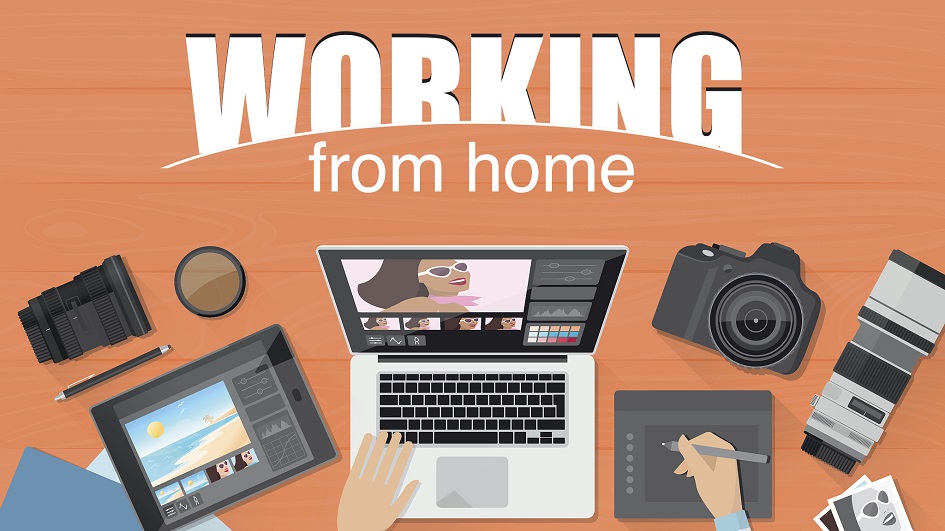WFH. It seems like only a short time ago, using the abbreviation to tell a friend or family member that I would not be heading to the office would result in confusion and questioning. “WFH? What’s that?” I would apologize, “Sorry, working remotely” or some similar locution. “Oh, you can do that? Cool!” Back then (earlier this same calendar year) I would agree and express my gratitude for the trust given to me, as well as the adulation I harbor for the privilege of working from home. In hindsight, perhaps we were not grateful enough. Record high unemployment rates and local governments deciding with some measure of haste which businesses were essential and which were not left many without a job at all. To have the option and ability to work remotely is benefit; for us as employees as well as those who employ us. However, there can be some downsides to working from home on a full time basis. Lets explore a few of the advantages and disadvantages, and craft a realistic snapshot of what will likely be the future of our workplaces moving forward.
Screaming Kids, Barking Dogs, and Heavy Machinery; or, The Bane of Remote Work
Let’s start with some of the natural and uncontrollable disadvantages, if only to serve as an appetizer of empathy and understanding in our three-course meal of home-office life. We have all been there.
- The dog that will not stop barking. Every dog owner has been there. Even if your dog is normally pretty quiet, for some reason as soon as you join the call it’s like a switch is flipped! Of course your pup is likely a room or two away so barring getting up and disrupting the call, you could not possibly quiet them from your desk.
- The kid(s) who insist on your immediate attention to show you their milk mustache, being that this is the highlight of their day thus far.
- The sidewalk being torn up at your neighbor’s house two doors down, that honestly sounds like it is outside of your home-office window.
If you consistently worked remotely prior to this year, these were all embarrassing and anxiety-inducing distractions on calls with coworkers, customers and end users . While we all want to maintain a perfect work environment for those we communicate with, it is idealistic to maintain. We are all in this together, and no one will fault you for working within the confines of a space that is meant to be lived in. We should all try our best to have a quiet space where we can concentrate, communicate, and collaborate, but we should be understanding that every situation is unique.
To sit or not to sit? That is the question.
Comfortable workspace at home can be hard to come by. Working from home can be sub-optimal, as sitting in even the most comfortable of chairs for a prolonged period is an easy way to wreak havoc on your back. Standing desks can be inconvenient and expensive and may not even fit your workspace. Studies suggest that standing all day can have adverse health effects, as well as just generally not be great for your feet. Yet sitting all day is also unhealthy. How do you reconcile these two facts? The general consensus is to make time to get up and move around when you are sitting, and to stand a few hours a day. Some people stand for 30 to 50% of their day in two separate periods, others will sit, stand, sit, stand, in intervals throughout the day. How you choose to arrange either position will greatly vary on preference and location of your standing desk. Consider standing for meetings, which opens up your diaphragm, allowing for better breathing while speaking, and better voice projection overall. Posture matters as well, whether you sit or stand. You want to be comfortable but keep your back straight for any time you sit for a long duration of time. Switching the position of your feet is just as important, as this activates all the small muscles, and does not allow them to get used to any one position. TLDR: In the matter of sitting or standing; the answer is both.
Cloud Nine
Less time in the office can change the way we manage our solutions. Admins can usually connect through remote software, but those IT professionals who upgrade, maintain, and scale these systems may have to do so in person. Now more than ever, organizations are considering cloud-based solutions, like OnBase Online. Cloud solutions provide a myriad of benefits, especially for remote work forces. OnBase Online requires less testing on Admins, while offering annual Test system refreshes and Disaster Recovery hosting included in all solutions. You would not need to worry about a physical location being destroyed by a natural disaster or similar catastrophe as you always have data availability with Hyland’s servers. Add to this the compliance and auditing ability that is built in and you really feel like you have an extra person on your team, managing these things automatically. This is a sure way to encourage people to spend their time improving and creating in OnBase, instead of just supporting it. There can be some downsides to cloud solutions. Older versions of OnBase may need to be upgraded to 18 or above to make the jump to the cloud. It can remove some of you (or your first line of support’s) direct access to troubleshooting, making the process more difficult. This is pretty much where the disadvantages end, making the advantages far outweigh the disadvantages.
I hope that all of this information helps empower you and your team to work smarter, make better use of your time, keep your back (and feet) from hurting when you are at home, and most importantly shed yourself of any concern you have about the distraction of working from home. If you have any questions or comments regarding OnBase Online, please contact us here.
